European Spacecraft Lands on Comet in Historic Space Feat
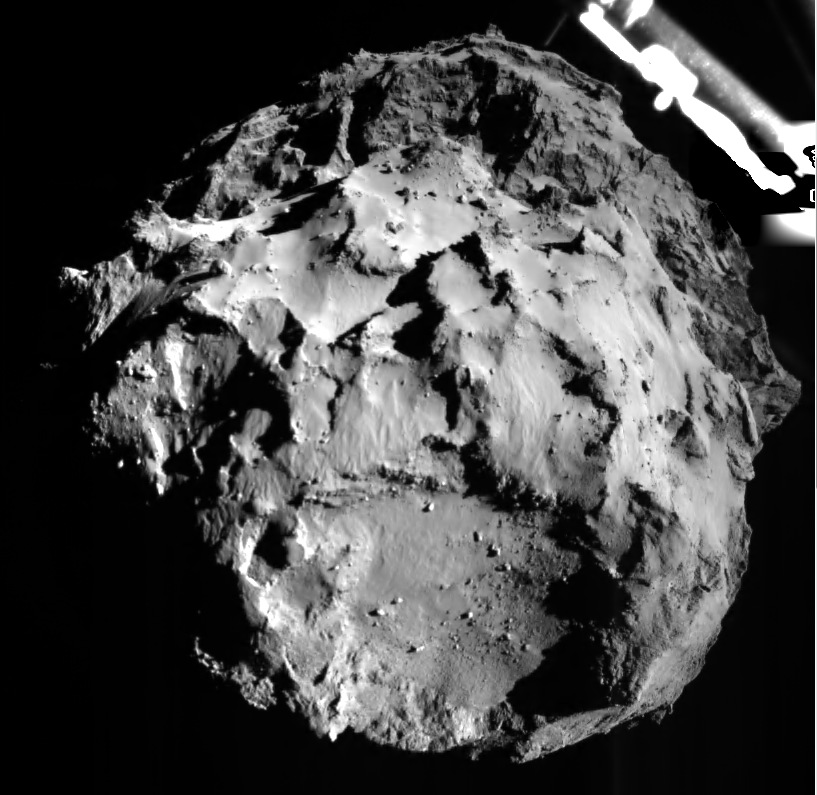
For the first time in history, a spacecraft from Earth has landed on the face of a comet speeding through deep space.
The European Space Agency's Philae lander on the Rosetta spacecraft made its nail-biting, history-making touchdown on the Comet 67P/Churyumov-Gerasimenko today (Nov. 12). Mission controllers are still trying to determine whether Philae's harpoons fired to anchor it to the surface of the comet. The landing ended what some scientists had dubbed "seven hours of terror" - the time it took for Philae to descend from Rosetta as the spacecraft and comet flew through space about 317 million miles (510 million kilometers) from Earth.
People started hugging, cheering and celebrating as soon as mission controllers got confirmation that the lander successfully touched down on the surface of the comet. Officials are now trying to determine whether they need to re-fire the probe's harpoons to be sure it stays in place on the comet. ESA officials confirmed that the spacecraft made its soft landing on the comet at a little bit after 11 a.m. EST (1600 GMT) today. [See images from the Rosetta mission]
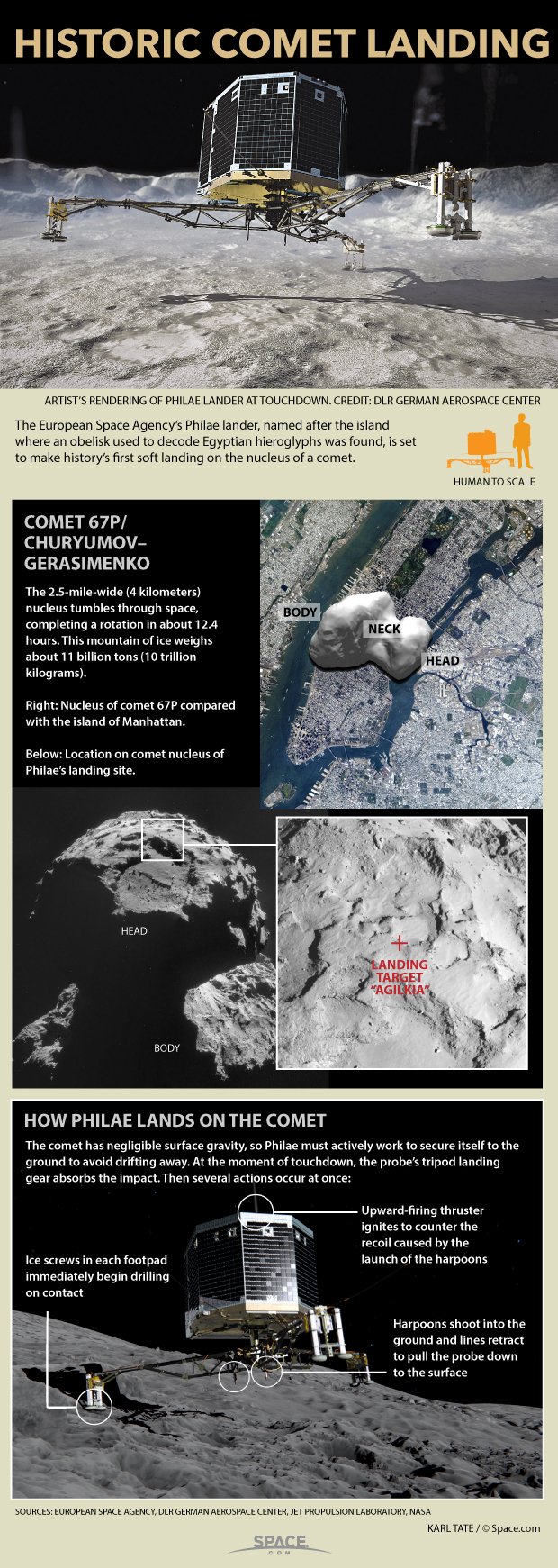
"We see the lander sitting on the road," Andrea Accomazzo, Rosetta flight director said just after landing was confirmed. "We've definitely confirmed that the lander is on the surface."
Unlocking comet mysteries
The Rosetta mission is charged with helping scientists learn more about comets, mysterious, icy wanders that are left over from the dawn of the solar system billions of years ago. Some research also suggests that comets could be responsible for bringing water to Earth early in the planet's history.
Philae's 10 instruments will monitor Comet 67P/C-G from the surface as Rosetta orbits the comet, investigating it from above.
Scientists hope that Philae will continue to collect data about the comet until at least March 2015. The two probes should be able to observe some changes to the comet as it flies closer to the sun. Rosetta is expected to remain with Comet 67P/C-G through December 2015, after it makes its closest flyby to the sun in August 2015.
Get the Space.com Newsletter
Breaking space news, the latest updates on rocket launches, skywatching events and more!
"Comet impacts are thought to have been one of the principal means by which water was delivered to the early Earth, around 3.6 billion years ago, possibly contributing half the water in our oceans," planetary scientist Stanley Cowley, of the University of Leicester in England, said in a statement.
Philae started its difficult descent to the comet's surface at 3:35 a.m. EST (0835 GMT). The probe separated from Rosetta when they were both flying about 14 miles (22.5 kilometers) from the comet's center. The lander deployed a harpoon into the comet just after touchdown in order to keep itself in place in the comet's low gravity.
Mission controllers ran into a problem with the 220-pound (100 kilograms) lander during earlier checks of the spacecraft's health. As ESA officials found that the probe's "cold gas thruster" could not be activated. The thruster would have been used to help keep the probe from bouncing off into space after touchdown, so instead, ESA officials decided to totally rely on Philae's harpoon to stick the landing.
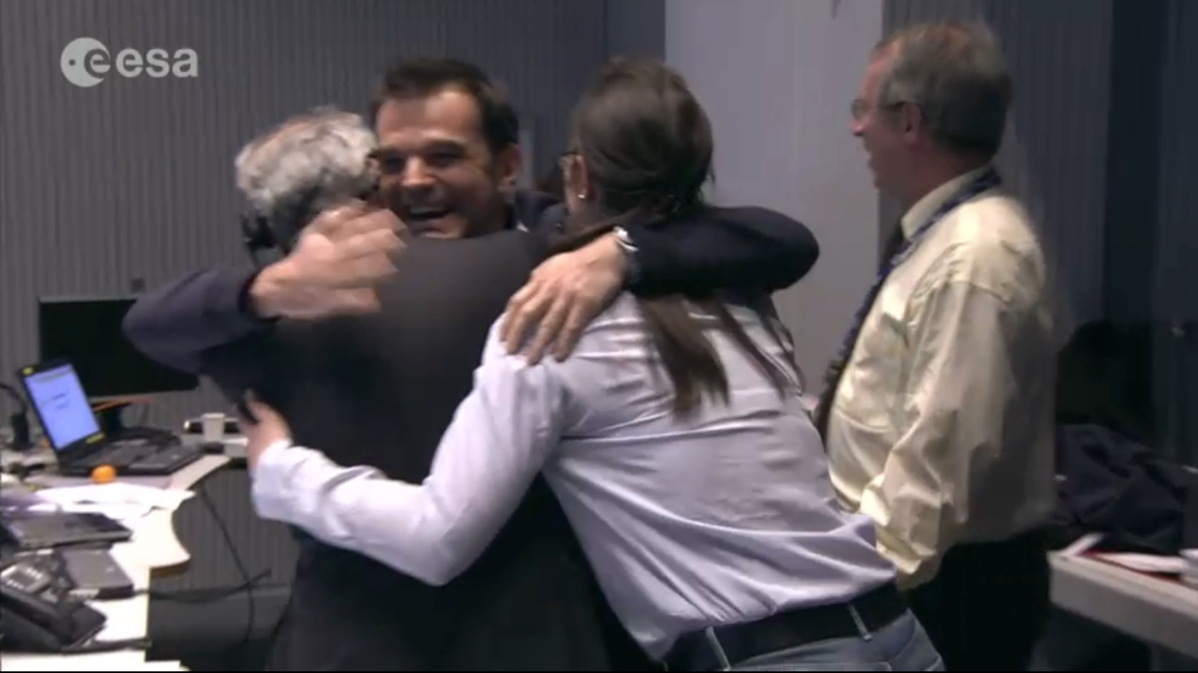
While Philae's landing marks the first time humans have soft-landed a probe on a comet, this is not the first time a spacecraft has visited one of these icy cosmic wanderers. An ESA spacecraft called Giotto flew past Halley's Comet in 1986, and NASA's Stardust mission returned samples of a different comet to Earth in 2006. Scientists also used a probe to impact Comet Tempel 1 in order to learn more about its structure.
The long road to a comet
It has been a long road to the surface of the comet for Philae. The Rosetta mission launched toward Comet 67P/C-G in 2004 and traveled about 4 billion miles through the solar system before reaching the comet in August. Since then, the two spacecraft have been warming up their instruments and preparing for the landing by learning how to fly in orbit around the oddly-shaped comet.
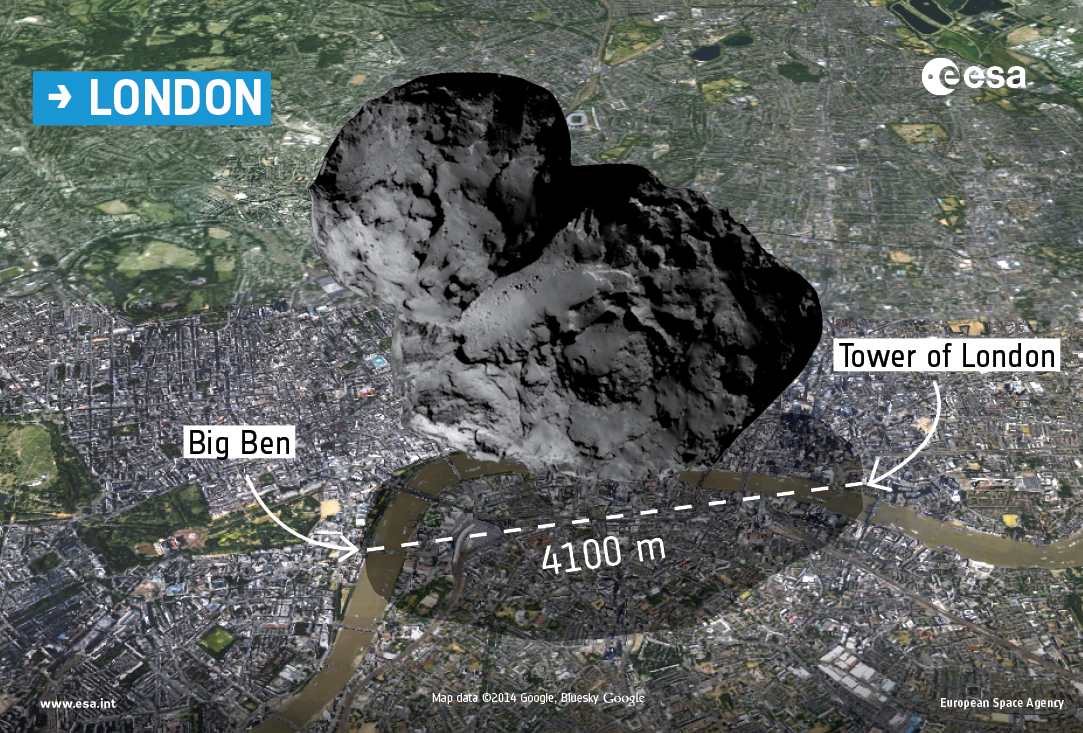
Comet 67P/C-G's nucleus is very different than mission controllers on Earth though would be. While researchers were expecting to find a semi-round, regularly shaped object, they instead found a strange looking comet with a "body," a "head" and a "neck." Philae is currently parked on the head of the comet.
Although the comet seems to be pretty stable right now, it's possible that it could break up as it flies closer to the sun. Comets are extremely unpredictable, and 67P/C-G is no exception, according to Rosetta project scientist Matt Taylor.
"Ultimately, comets only have a limited amount of fuel and a limited lifetime," Taylor said during a webcast before the landing. "We hope and expect that the comet will live up to the end of next year, hopefully, but it may not, it may break up. We don't know. That's part of the mission itself, is to try and understand how a comet works."
Philae, Rosetta and the landing site, Agilkia were all named in a similar, Egyptian theme. Rosetta is named after the Rosetta Stone, a tablet that helped archaeologists translate ancient Egyptian hieroglyphics. Philae is named for an obelisk found on an island of the same name in the Nile River, and Agilkia is named for another island in the Nile.
Editor's Note: This story was updated to reflect a correction at 11:43 a.m. EST (1643 GMT). Scientists are not yet sure whether the lander's harpoons deployed.
Follow Miriam Kramer @mirikramer and Google+. Follow us @Spacedotcom, Facebook and Google+. Original article on Space.com.
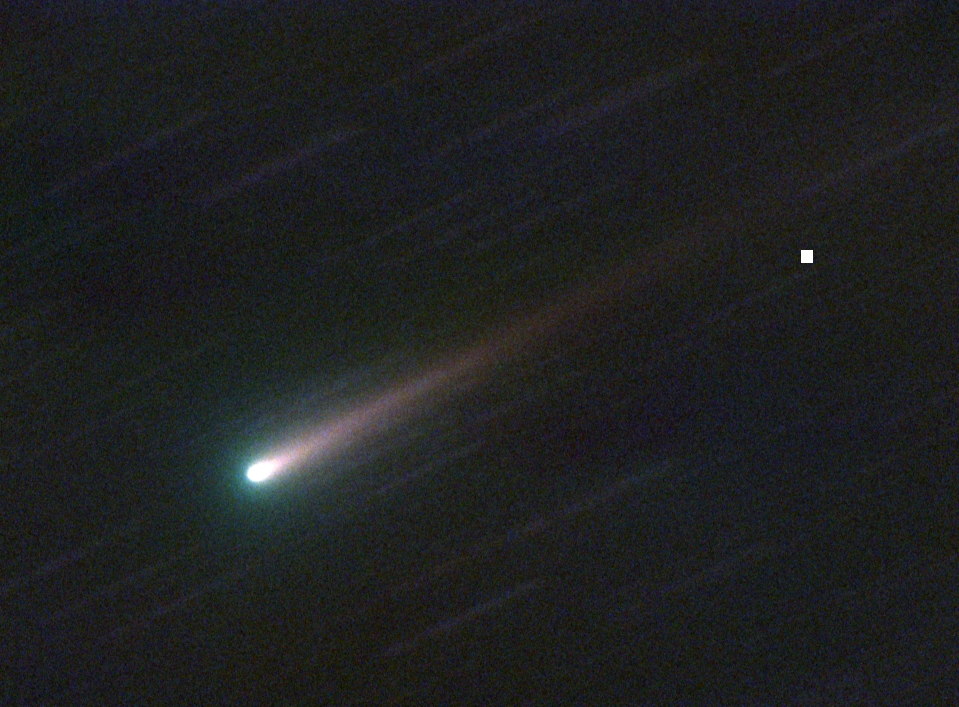
Join our Space Forums to keep talking space on the latest missions, night sky and more! And if you have a news tip, correction or comment, let us know at: community@space.com.

Miriam Kramer joined Space.com as a Staff Writer in December 2012. Since then, she has floated in weightlessness on a zero-gravity flight, felt the pull of 4-Gs in a trainer aircraft and watched rockets soar into space from Florida and Virginia. She also served as Space.com's lead space entertainment reporter, and enjoys all aspects of space news, astronomy and commercial spaceflight. Miriam has also presented space stories during live interviews with Fox News and other TV and radio outlets. She originally hails from Knoxville, Tennessee where she and her family would take trips to dark spots on the outskirts of town to watch meteor showers every year. She loves to travel and one day hopes to see the northern lights in person. Miriam is currently a space reporter with Axios, writing the Axios Space newsletter. You can follow Miriam on Twitter.









